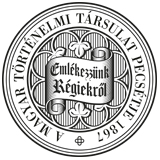Századok – 1999
Tanulmányok - Fónagy Zoltán: Nemesi birtokviszonyok az úrbérrendezés korában. A nemesség a magyar társadalomtörténet-írásban VI/1141
NEMESI BIRTOKVISZONYOK AZ ÚRBÉRRENDEZÉS KORÁBAN 1187 ESTATE RELATIONS IN THE ERA OF URBARIAL REGULATION. NOBILITY IN HUNGARIAN HISTORIOGRAPHY by Zoltán Fónagy (Summary) The census during the reign of Joseph II found nearly four hundred-thousand nobles in the historical territory of Hungary. Behind the fiction of the legal equality of this mass, there lay a variety of living conditions. Historians have been aware of this fact, but we have not had a national picture of the stratification of nobility based on statistical data. (Regional researches of the last decade have explored the stratification of noble society in several counties.) In feudal and agrarian Hungary, possession of land was a crucial issue: for the overwhelming majority land was the basis of existence, and for its possessors it was the source of social prestige. However, we have neither contemporary estate statistics nor a historical statistical reconstruction about the era of late feudalism. The PhD dissertation on which this study is based wishes to fill this gap, to the extent that the existing sources and data permit, that is, with regard to urbarial lands. For this purpose, we used the charts made during the urbarial regulation ordered by Maria Theresa. Between 1767 and 1774, these registers recorded the data of the urbarial territory of Hungary using uniform guidelines. Urbarial charts of about 7600 localities of 44 counties can be found in the National Archives, among the Dep. Urbariale documents of Governorship Archives. According to the near contemporary summary, 6.1 million Hungarian acres of urbarial land was registered. The surviving charts include 82 percent of this, nearly 5 million acres. 88 percent of the 515 thousand urbarial households in the summary, that is, 456 thousand households were registered. Naturally, we cannot expect an exact reconstruction similar to the landowners' registers of the bourgeois era on the basis of this set of sources. Its major deficiency is that it does not include the extension and division of territories free of feudal tenure (allodium). The processing of archive materials was conducted using computer technology. The computer database thus develope is accessable in the Social Historical Data Bank, and can therefore also be utilized by other researchers. The most important data of the explored and, with regard to its major characteristics, analyzed source are the following: 5800 owners in the 7600 localities possessed 21000 estates, that is, on average, one owner was present in 3.6 localities, and an average village was divided between 2.8 landlords. Nearly three-quarters of urbarial estates were in the hands of noble private owners, the rest was divided among the royal treasury, catholic clergy and free royal cities. In Hungary in the narrowest sense, every tenth acre belonged to the monarch, and every sixth one to the state church. Hardly one tenth, 5600 of the approximately 57000 noble families had urbarial estates or labour force. However, there existed an extreme financial polarization among them. Predominance of lords of large estates among demesnes even exceeded former estimates: two out of every three acres were in the hands of 110 big landowners, who constituted two percent of all landowners. It seems that even former cautious estimates about the bene possessionatus nobility have to be corrected in the opposite direction. About three hundred people belonged to its wealthiest group (that of owners of 1000-5000 acres), but one-third of them bore the title magnate. Approximately the same number of people belonged to the group of owners of 500-1000 acres, who were called real medium land owners. The field widens only around the lower border of medium land: two-thirds of the middle stratum, which consisted of altogether two thousand people at the most, possessed less than 500 acres. The majority (two-thirds) of the one-tenth of the nobility who had some 'lord-like' ownership cultivated the idea of belonging to the privileged stratum while playing the lord on an estate smaller than a hundred acres, and one-fifth of them did the same with only a couple of landless serfs. We have demonstrated by using data what a big gap there existed between social status and property situation even at the top of the feudal society: magnate and big landowner are such different terms that only one-third of big landowners belonged to those who really counted as wealthy, another third of them were on the same level as well-off medium land owners, and the rest could count on an income of only a small medium estate.
